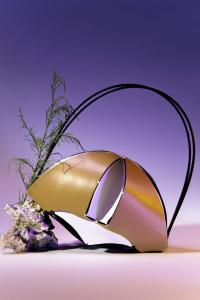PRODUCT DESIGN
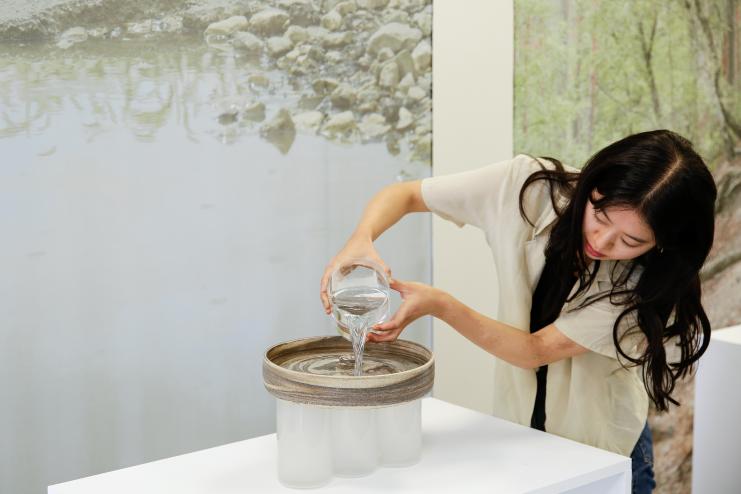
The Product Design department provides the theoretical, technical, scientific and plastic tools required to carry out a project successfully, using design and practice.
- drawings and their perceptions are coherent and relevant,
- manufacturing methods and the project economy are considered,
- shapes, materials and structures are harmonious,
- sustainability and innovation are put to the service of humans and their environment to imagine a livable future.
- Students are introduced to multidisciplinary work to eventually become designers, creators, researchers, enablers, entrepreneurs, mediators...
- 1978 / 1979 apprentissage du dessin à l’école boule à Paris
- 1979 / 1982 CAP de sérigraphie et CAP de dessin publicitaire au lycée Corvisart Paris
- 1982 / 1983 atelier préparatoire Lecomte à Paris
- 1983 / 1986 diplômé de l’ENSAAMA (Olivier de Serre) section architecture intérieure
- 1986 / 1987 spécialisation en section mobilier à l’ENSAD.
- 1988 / 1993 En 1988, travail en indépendant, création de ZEUGMA (design intérieur, design objet, prototype).
- 1993 / 1998 En 1993 création de « des choses et d’autres » sarl.
- 1998 / 2003 En 1998 déménagement de l’entreprise à La Rochelle.
- 2003 / 2005 En 2003 construction de nouveaux locaux adaptés à l’entreprise, déménagement en juillet 2004. Novembre 2004 destruction totale de l’entreprise par un incendie accidentel. En 2005 réorganisation de l’entreprise, maintien de la conception d’objet/espace à La Rochelle.
- 2006 / 2010 En 2006 nominé au Silmo d’or dans la catégorie environnement produit.
- 2010 / 2014 En 2010 nouveaux locaux pour « des choses et d’autres ».
Teaching
Teaching
The Product Design department introduces students to the methods and theoretical, technical, scientific and plastic tools they need to carry out a project successfully, using design and practice.
They are made aware of environmental, social, scientific, economic, philosophical and political issues.
To address the issue raised by “the object” or by a study, the project starts with a thorough analysis of both the context and the users.
Students develop the project culture. Then, they conduct experiments on the field or in workshops to design and make life-size prototypes and real or virtual devices.
When they create and represent the objects and devices resulting from the study, students must ensure that:
Several projects with our partners lead them to work with production and research specialists in the various fields of design.
Bachelor’s Degree
The Bachelor’s degree offers students the basis on which to develop their practice of design. The first year is common to all the departments of the school. Years 2 and 3 are dedicated to research and designing. In Year 2, students are given time to acquire the research, practical and theoretical tools used by designers: they “do” and “make” as part of the school’s technical workshops. There, they learn about theoretical tools, building rules which structure materials, assemblage manufacturing methods used in workshops, appropriation of materials, 3D modeling and about the contemporary techniques which limit the environmental impact of a production. This technical knowledge goes beyond mere practicality, as it is seen through the lens of culture and sensibilities. What feeling and aesthetics stem from the shape we are creating? What cultural elements do the shapes refer to?
Year 3 is a synthesis which ends with the exams students pass to get their Bachelor’s degree. They address project management methodology with NGOs, factories and artisans and work in a concrete environment so they can imagine and exchange.
Master’s Degree
The Master’s degree is largely devoted to working in the field and collaborating with other disciplines. In Year 4, students further their project on applied themes and are introduced to research and theoretical thinking which then translates into the graduate thesis. Thanks to the knowledge they gained during the Bachelor’s degree, students explore various defined fields with partners (a rural area, a healthcare facility, a public player, a French business, a new technological network). Using anthropology resources, they find the issues raised by the field to develop a design project both with and for the users they have met.
That is then completed by the development of a graduate project created and carried out by each student in Year 5. During that last year, students prepare for their departure from the school, start or continue their personal approach and build their network, which is made up of other artists, manufacturers, sponsors, etc.
Research and Production
The curriculum encourages students to base their Year 5 project on a contemporary issue linked with a field of design: industrial products, furniture and home, service design, communicating object, communication design. Students are asked to decide which field of design they intend on working in and. If they desire, they are also encouraged to consider their graduate project as a first step into the field they would like to join once they complete their studies.
The school encourages anticipation, social innovation, research, publishing and creation. It develops the students’ ability to analyze the relationship between objects and their users to promote social bonds and ecological answers in various contexts: home, healthcare and well-being, mobility, work, education, etc.
The curriculum offers a research and production program with specialists and outside partners: companies, agencies, schools, factories, institutions, hospitals…
Students develop every step of the project: the problem, concept, project culture, surveys, analysis, research ideas, experiments, model and life-size prototypes, communication, etc.
Enseignant·es
| Nom | Fonction |
|---|---|
Cyril Afsa
Cyril AfsaEnseignant en Design Objet. |
Non renseigné |
Christophe Bigot
Christophe BigotFormation : Références : Enseignant technique à l’EnsAD (école des Arts Décoratifs de Paris) en section mobilier. Enseignant à l’EnsAD, intervention au lycée de Péronne, à l’IAV d’Orléans, aux Arts Déco de Limoges. Création d’une collection de présentoirs à lunette destinés aux opticiens et présent sur le salon de l’optique le Silmo à Paris. A l’EnsAD, fusion de la section mobilier et design, enseignant en 2ième année pour un cours intitulé : « couleur matière lumière » et suivi des projets pour la 3ème, 4ème et 5ème années. Enseignant à l’école PIVAUT à Nantes (2006 / 2011), en 2ième et 3ième année design d’espace. Travaux de réalisation d’oeuvres pour Philippe Daney Factory, sculptures en collaboration avec François Canté Pacos, commande de Grégoire Solotareff pour L’Abbaye de Fontevraud …. |
Designer |
Florence Doleac
Florence DoleacFormation et titres universitaires Diplômée de l’ENSCI les ateliers / Ecole Nationale Supérieure de design Industriel Florence Doléac est née en 1968 à Toulouse. Elle est diplômée de l’ENSCI / Les Ateliers en 1994 ; elle co-fonde en 1997 la société du groupe RADI DESIGNERS avec Laurent Massaloux, Robert Stadler et Olivier Sidet ; c’est une collaboration intense et fructueuse.
Exposition Solo CATALOGUES COLLECTION PUBLIQUE BOURSES PRIX CLIENTS |
Designer |
Alexandre Fougea
Alexandre Fougea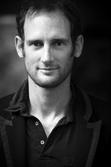
Ingénieur de l’École des Arts & Métiers, Alexandre Fougea crée en 2003, alors encore étudiant, la marque Akonite. Il conçoit alors des skis en matériaux composites pour les compétiteurs internationaux. En parallèle, Alexandre Fougea travaille pour des entreprises dans le domaine de l’aéronautique et du nautisme. En 2008, Alexandre décide avec sa société de se consacrer à part entière au développement de nouveaux produits. Parmi ses clients, on compte Balenciaga, Louis Vuitton, Bell&Ross, Jean-Paul Gauthier, Courrèges, Les Galeries Lafayette, Patrick Jouin, Mathieu Lehanneur, Le Plaza Athénée, EDF, Citelum, Véolia, Dassault… Depuis 2009, Alexandre Fougea enseigne le design objet à l’EnsAD. Animé par une vision composite de la matière et du projet, Alexandre, aujourd’hui ingénieur-designer, mêle intimement design et ingénierie dans l’ensemble de ses travaux. Son studio de design et de conception est installé à Paris. |
Ingénieur, Designer |
Laurent Godart
Laurent GodartBAC A3 arts plastiques
Enseignant & coordinateur design objet Enseignant en design et morphostructure Salarié de l’agence O’design -2002- 2002 (dossiers traités : Minelli, graphisme, T-Mugler graphisme et mobilier, Maison et objet signalétique, aéroport de paris architecture intérieure...)
Design : « De terre et d’eau», céramiques, moyenne série. Design, mobilier pour Procédé Chenel Internationnal. Publication «Guide de l’improvisation Jazz à la batterie », graphisme et co-signature avec Bertrand Renaudin , projet en cours d’édition. Design : « Drôles d’objets domestiques » , bestiaire typologiques, projet de recherche. Design Produit d’éclairage, Martinelli luce. Roman graphique,«Nous aurions pu être», pojet en cours. Design global, identité boutique pour Lise Charmel Internationnal. Signalétique et mobilier, Chateau de Tacy, Monuments Nationnaux. Design , tapis 4 seasons , Chevalier édition. Micro-architecture commerciale, Photopointcom/Les Vedettes de Paris.
Expositions : Maison et Objet, Salon du meuble, Paris, Milan |
Designer |
Sophie Larger
Sophie Larger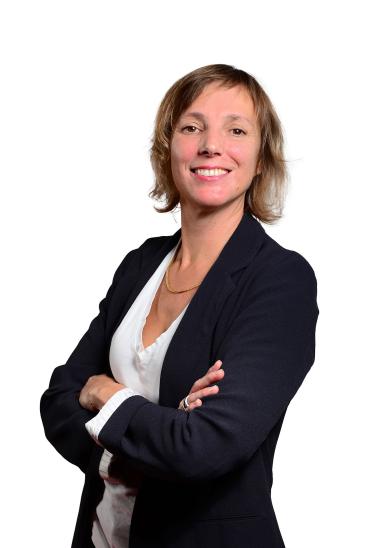
Sophie Larger, designer et doctorante SACre PSL. Sophie Larger est designer et enseignante à l’Ensad. Elle explore divers domaines, allant de la recherche en design à l’installation artistique, en passant par la création d’objets. Depuis 2015, elle travaille sur des projets de design appliqué aux unités de soins. Depuis 2019, elle mène le projet de recherche en design intitulé « Ré-confort : esthétique et design tactile de l’apaisement en milieu psychiatrique ». En 2023, elle a conçu deux espaces d’apaisement en collaboration avec les patients et les soignants, résultat d’expérimentations pratiques, de dialogues et de retours d’expérience avec les usagers. Elle travaille avec plusieurs unités hospitalières : à l'UHSA Paul Guiraud (Villejuif), à l'EPS Ville-Evrad (Aubervilliers) et au GHU Paris (en lien avec le Lab-Ah). Elle est actuellement doctorante en design au sein du laboratoire de recherche SACRe_PSL, à Ensadlab (groupe Symbiose), depuis octobre 2022. |
Enseignante, Designer |
Patrick Renaud
Patrick Renaud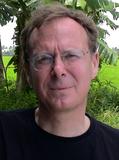
Responsable V.I.A. Multimédia pour le VIA / Valorisation de l’innovation dans l’Ameublement de 1984 à 1995 / Mise en place des différents projets liés à l’innovation à la Recherche et aux nouvelles technologies. Responsable des maisons du futur pour le Salon Habiter à la Villette de 1986 à 1990, Cofondateur du Phare au Salon du Meuble de Paris de 1998 à 2002 avec Jean-Claude Maugirard et Gilles de Bure. Conseiller artistique pour le Groupe Galeries Lafayette de 2003 à 2005. Depuis 1996, différents projets pluridisciplinaires pour LASER - Lafayette Services auprès de Philippe Lemoine/président et pour les Galeries Lafayette, Monoprix, BHV, Télémarket, l’Echangeur, Le Forum Modernité, Sony France, les Industries Françaises de l’Ameublement, le Phare, VIA, le Salon du Meuble de Paris (L’Ecole française, French Line ) EnsAD etc. Professeur et coordonnateur de design à l’I.A.V. d’Orléans (Gérard Baudoin directeur) de 1984 à 2004 et enseignant dans le DESS des Industrie du Luxe et des Métiers d’Art de 1992 à 2002 (Danielle Allérès directrice) avec des modules sur le Design à l'Université de Marne la Vallée puis à Paris Sorbonne. Patrick Renaud est enseignant et coordonnateur du secteur Design objet à l'École. |
Designer |
Mémoires
| Étudiant.e.s | Titre du Projet | Année |
|---|
